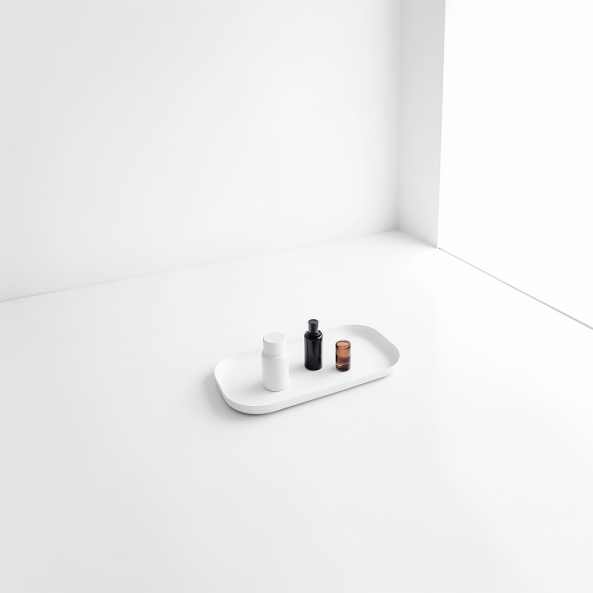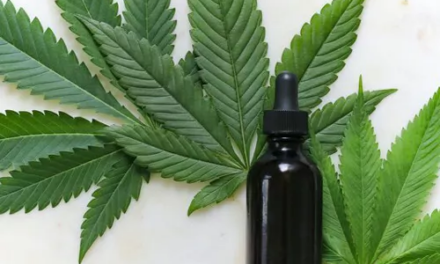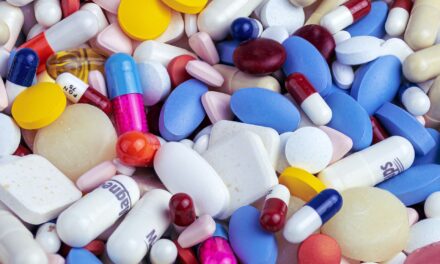What Is a Good Routine For Skin Prone to Acne and Clogged Pores?
Acne is a complicated skin condition, but understanding its causes and developing an effective skincare routine can make a big difference. In this article, we’ll dive into the science behind acne and explore practical tips to help you regulate your skin sebum, reduce inflammation, and control the growth of acne-triggering bacteria. You’ll also learn how to create an effective anti-acne skincare routine that addresses multiple factors contributing to acne formation.

How does acne appear?
It starts with a clogged pore. Skin pores, or follicles, can become clogged when a mixture of skin debris and sebum becomes sticky and settles on the pore’s surface. This mixture accumulates over two-three weeks, forming a microcomedone that is not visible to the naked eye. Acne-causing bacteria grow rapidly inside the pore, and small hairs can become trapped. After two to four weeks, the microcomedone can develop into a visible comedone, either as a closed bump or an open blackhead. If the growing acne bacteria irritate the skin inside the pore, an inflamed acne spot appears.
As you can see, there are multiple factors that cause acne to appear.
Natural skin sebum
For acne to appear, the mixture of skin debris and skin sebum needs to become sticky. This can happen because skin produces too much sebum.
People who are prone to acne tend to produce more oil than those who don’t have acne. However, just because someone has oily skin doesn’t mean they will necessarily experience acne breakouts. Although sebum is necessary for acne to develop, high oil levels alone are not the only factor that causes acne. Besides the quantity of oil produced, there are also differences in the quality of oil between people who are prone to acne and those who aren’t.
Practical implications
Topical skincare actives like retinoids, niacinamide and azelaic acid can help reduce the rate of sebum production in skin.
Sometimes, pores can get clogged because of the way sebum works.
Research has shown that the sebum in people with acne is different from that of people not prone to acne.
Those with acne-prone skin tend to have more squalene, less linoleic fatty acid, and less antioxidant vitamin E in their natural skin oil.
The role of linoleic acid in our skin sebum
Our skin needs linoleic acid to make ceramides, which are essential for a healthy skin barrier and the normal shedding of dead skin cells, including those within pores. When our skin sebum lacks linoleic acid, it weakens our skin barrier, and this in turn leads to skin debris getting trapped inside our pores.
Practical implications
- Adding more linoleic acid to the surface of your skin may have a positive impact on reducing acne and clogged pores. Look for moisturizers with added linoleic acid.
- Supporting your skin barrier with good moisturizer and an overall gentle skincare routine can help normalize the skin cell turnover and decrease pore clogging.
- Using skincare actives like retinoids and salicylic acid can provide an extra help for speeding up the skin cell turnover and reducing pore clogging.
The role of squalene in our skin sebum
Squalene is a type of lipid found naturally in the skin’s sebum, but not in any other part of the body. It works a natural moisturizer on the surface of our skin.
However, our skin’s squalene can have a negative effect. It can react with environmental stressors through a process called lipid peroxidation. This means that skin lipids, including squalene, are oxidized, resulting in the formation of reactive and inflammatory compounds. When squalene is exposed to environmental stressors like pollution and UV light, it turns into squalene peroxides, which can irritate the skin and weaken its barrier. As a result, the skin becomes more susceptible to inflammation, including inflamed acne.
Practical implications
Use a daily broad spectrum sunscreen to protect your skin from UV light and decrease the formation of squalene peroxides on your skin surface.
The role of antioxidants in our skin sebum
The skin produces its own antioxidants to prevent the oxidation of sebum lipids. The most important of these antioxidants is Vitamin E, which is naturally present in the skin sebum. However, acne-prone skin tends to have less Vitamin E in its serum. This, combined with an excess of squalene, means that more irritating squalene peroxides are produced, leading to increased skin inflammation.
Practical implications
Using antioxidants in your skincare routine may help to reduce pore clogging and help with controling acne. Studies show that sodium ascorbyl phosphate (SAP), a stabilized vitamin C derivative, can be effective against clogged pores and acne.
What causes differences in the natural sebum composition and quantity of different people?
The composition and amount of natural sebum produced by our skin is regulated by hormones. As a result, any factors that affect our hormonal balance can also impact our skin’s sebum production. This includes genetics, life stages such as adolescence, menopause, monthly female cycle, pregnancy, or stress levels, nutrition, and overall health.
Practical implications
Maintaining good nutrition and managing stress can have a significant positive impact on reducing acne and clogged pores. In terms of nutrition, it’s important to ensure you’re getting enough Omega-3 fatty acids. Eating a balanced and varied diet is also crucial for healthy skin. Regular physical movement and “de-stressing” activities like good sleep, reading good books, walks outside, meditation and spending quality time with your loved ones can also help a lot in managing acne.
Can cosmetics contribute to pore clogging?
When we apply cosmetics to our skin, the ingredients can mix with our natural sebum. This mixture can be influenced by UV light, oxygen, and air pollution, potentially leading to clogged pores. This process is complex and can depend on various factors, such as the starting composition of our skin sebum. This composition can differ between different people and even for the same person at different times, such as during different stages of the menstrual cycle. It’s also important to note that ingredients that may increase pore clogging for one person may not have the same effect on someone else.
It’s true that some ingredients have a higher risk of clogging pores. However, the problem is that we rarely use a pure ingredient on our skin. Most of the time, it’s mixed with other ingredients, which can make the mixture more or less likely to clog pores than the pure ingredient. Comedogenicity ratings, which measure pore-clogging potential, are typically based on tests of pure or diluted single ingredients. As a result, these ratings aren’t very helpful in predicting the pore-clogging risk of products that contain multiple ingredients. While it’s theoretically possible that including a pore-clogging ingredient in a product could increase the risk of clogged pores, a product can still contain a comedogenic ingredient without actually increasing pore-clogging in practice.
In general, it’s highly unlikely that the cosmetic products you use are the main cause of clogged pores or acne. While some medications can cause acne as a side effect, topical cosmetics are almost never the primary cause of acne.
Practical implications
While substances in cosmetic products can alter the composition of the oil on the surface of our skin slightly, their effect on the oil inside our pores is typically very small. As a result, cosmetic products are rarely the main cause of comedone formation or acne.
For this reason, we do not recommended to obsess over ingredients’ comedogenicity ratings. You can take them into consideration when selecting new products, but it’s unnecessary to stop using products that work well for your skin simply because one or two of their ingredients has a higher comedogenicity risk rating.
Inflammation-prone skin
Acne is an inflammatory skin condition. Skin irritation always plays a role in acne formation.
There are two sources of skin irritation that can contribute to acne:
- Irritation caused by by-products of bacteria living inside clogged pores.
- Irritation caused by external factors such as irritants in cosmetics or harsh skincare routines involving over-washing and over-exfoliation.
When you have acne, your skin’s immune system is highly sensitive and responds with inflammation to any potential threat. The bacteria growing inside a clogged pore are seen as a threat by irritated skin, resulting in inflamed spots. Interestingly, these bacteria exist on both acne-prone and acne-free skin, and they do not directly cause acne.
Scientists are not entirely sure which comes first: skin immune system sensitivity as a response to too much bacteria or skin inflammation creating more favorable conditions for bacteria to grow, resulting in more bacteria and further inflammation. In practice, it doesn’t matter much: once acne is present, the growth of bacteria and skin inflammation reinforce each other.
Practical implications
To help calm down inflammation in your skin, we recommend treating acne-prone skin as a sensitive skin. In a nutshell, it involves limiting the number of products you use, going fragrance-free, and moisturizing well. Always check the irritancy risk of products before purchasing – you can do so conveniently using WIMJ Product Search.
Acne triggering bacteria
Certain bacteria called P. acnes are known to contribute to acne. These bacteria thrive in environments with little oxygen, which is why they live inside pores. The more closed or clogged a pore is, the better it is for these bacteria to thrive. However, P. acnes bacteria cannot survive in the presence of too much oxygen, which is why they don’t live on your makeup brushes or pillowcases.
To combat P. acnes bacteria, antibacterial compounds such as benzoyl peroxide and salicylic acid can be used in topical skincare products. In severe cases of acne, dermatologists may prescribe topical or oral antibiotics to control P. acnes growth on the skin.
Recent studies have found that inflammation occurs early in the development of acne and is caused by the sensitivity of the skin’s local immune system. P. acnes bacteria may not be the primary cause of inflammation, but they can worsen it by producing substances that break down skin sebum and activate the immune system. Scientists have also discovered that certain types of P. acnes are associated with acne, while others may actually promote skin health.
While reducing the growth of bacteria is important for controlling acne, a good anti-acne skincare regimen should also reduce inflammation and help balance sebum production. This highlights the importance of treating acne with a combination of actives, rather than solely relying on killing P. acnes bacteria. While benzoyl peroxide and antibiotics can be effective against acne, they may not be the best or most effective treatment option, especially when used without the support of other actives.
Practical implications
If you suffer from inflamed acne spots, benzoyl peroxide and salicylic acid can be effective in reducing the growth of acne-triggering bacteria inside pores. You can use them as a spot treatment or apply them all over the acne-prone area. However, it’s important not to rely solely on these compounds in your anti-acne regimen. Instead, consider using actives such as retinoids, niacinamide, and azelaic acid that help regulate your skin sebum and decrease inflammation in the skin.
Salicylic acid and benzoyl peroxide both work against acne-triggering bacteria, but there are differences between these two actives. Salicylic acid not only has a direct antibacterial action, but it also has an anti-inflammatory effect and improves the shedding of skin debris. It targets multiple causes of acne at the same time. Benzoyl peroxide has a stronger antibacterial effect than salicylic acid, but it does not impact the other causes of acne. In fact, benzoyl peroxide can weaken the skin barrier, making the skin more inflammation-prone. Therefore, it’s best to limit the use of benzoyl peroxide to a short period of time, ranging from a few weeks to a few months, and stop using it as soon as you have your inflamed spots under control.
Learn more about the top anti-acne actives, effective concentrations and how to include them into your skincare regimen
How does a good anti-acne skincare routine look like?
Acne is a complicated skin condition that can significantly impact your quality of life. If you are struggling with acne, it is best to seek personalized treatment from a qualified dermatologist.
A successful anti-acne skincare regimen should address multiple factors that contribute to acne formation:
- Regulate the skin sebum, reduce its production rate and balance its composition by using ingredients like retinoids, niacinamide, and azelaic acid. Moisturizers with linoleic acid and antioxidants like sodium ascorbyl phosphate can also be helpful. Don’t forget to wear a broad-spectrum sunscreen daily to prevent squalene peroxides from forming.
- Improve skin cell turnover with retinoids and salicylic acid. A strong skin barrier is also crucial for healthy skin cell turnover.
- Reduce inflammation by supporting your skin barrier with a good moisturizer and gentle skincare routine.
- Control the growth of acne-triggering bacteria with compounds like salicylic acid or benzoyl peroxide.
Finally, remember that good nutrition, physical activity, and stress management can also make a big difference in getting acne under control.
Please note that this is not medical advice, and you should always consult a doctor for medical treatments.
There is no one-size-fits-all solution for acne. But if you’d like an example of what an effective anti-acne skincare regimen could include, here it is:
AM:
- Treatment with 10%-20% azelaic acid
- Antioxidant serum with 5% sodium ascorbyl phosphate
- Moisturizer with linoleic acid
- Broad-spectrum sunscreen SPF 30+
PM:
- Gentle cleanser
- Retinoid treatment (for example, adapalene 0.1% or hydroxypinacolone retinoate 0.5%)
- Serum with 4%-6% niacinamide
- Moisturizer with linoleic acid.
Spot treatment on inflamed breakouts with 2% salicylic acid or 2.5% benzoyl peroxide.
Once a week: use an exfoliant with 2% salicylic acid.
If your skin is sensitive, use less concentrated actives and apply the retinoid less frequently (for example every other day or 2-3 times a week).
It can take at least 3 months of a consistent routine to see real results.
Choose your products based on actives
WIMJ Search allows you to select skincare products based on what’s inside. Filter products by actives included, and exclude ingredients you don’t want. Check the concentration of ingredients and potential irritants.
Sources
-
Development of a QSAR model to predict comedogenic potential of some cosmetic ingredients https://www.sciencedirect.com/science/article/abs/pii/S2468111321000530?via%3Dihub
-
An Investigation of Makeup Ingredients and Their Effects on Acne Cosmetica with Dermatologic Practice Recommendations https://jofskin.org/index.php/skin/article/download/1289/pdf
-
Simion, FA. Acnegenicity and comedogenicity testing for cosmetics. Handbook of Cosmetic Science and Technology. 2001; 837-844.
-
Use of the rabbit ear model in evaluating the comedogenic potential of cosmetic ingredients J. Soc. Cosmet. Chem., 34, 215-225 (August 1983) https://www.nononsensecosmethic.org/wp-content/uploads/2013/12/Use-of-the-rabbit-model.pdf
-
Comedogenicity of current therapeutic products, cosmetics, and ingredients in the rabbit ear https://pubmed.ncbi.nlm.nih.gov/6229554/
-
Comedogenicity and irritancy of commonly used ingredients in skin care product https://insolitbeauty.com/documentacion/Comedogenicidad%20e%20irritacion%20de%20los%20ingredientes%20de%20uso%20comun%20en%20productos%20para%20el%20cuidado%20de%20la%20piel.pdf
-
Drug-Induced Acneiform Eruption https://link.springer.com/article/10.2165/11588900-000000000-00000
-
COMEDOGENICITY OF SQUALENE MONOHYDROPEROXIDE IN THE SKIN AFTER TOPICAL APPLICATION https://www.jstage.jst.go.jp/article/jts1976/25/2/25_2_77/_article/-char/ja/
-
A re-evaluation of the comedogenicity concept https://www.sciencedirect.com/science/article/abs/pii/S0190962205046001
-
Acne Cosmetica https://link.springer.com/chapter/10.1007/978-3-540-69375-8_35
-
Non-comedogenic and non-acnegenic claim substantiation. https://europepmc.org/article/med/29616616
-
Expert consensus on holistic skin care routine: Focus on acne, rosacea, atopic dermatitis, and sensitive skin syndrome https://onlinelibrary.wiley.com/doi/full/10.1111/jocd.15519
-
The role of follicular hyperkeratinization in acne https://www.tandfonline.com/doi/abs/10.1080/095466300750163645
- Propionibacterium acnes and Acne Vulgaris: New Insights from the Integration of Population Genetic, Multi-Omic, Biochemical and Host-Microbe Studies https://www.ncbi.nlm.nih.gov/pmc/articles/PMC6560440/
- Rethinking Sebum and Its Role in Acne https://practicaldermatology.com/articles/2022-june/quality-over-quantity-rethinking-sebum-and-its-role-in-acne
-
From new findings in acne pathogenesis to new approaches in treatment https://onlinelibrary.wiley.com/doi/full/10.1111/jdv.13186
-
Comparison of topical retinoids in the treatment of acne https://www.sciencedirect.com/science/article/abs/pii/S0738081X04000471
-
Acne in ethnic skin: special considerations for therapy https://onlinelibrary.wiley.com/doi/abs/10.1111/j.1396-0296.2004.04019.x
-
Adult female acne: a new paradigm https://onlinelibrary.wiley.com/doi/abs/10.1111/jdv.12061
-
Sodium ascorbyl phosphate shows in vitro and in vivo efficacy in the prevention and treatment of acne vulgaris https://onlinelibrary.wiley.com/doi/abs/10.1111/j.1467-2494.2005.00263.x
-
Sodium L-ascorbyl-2-phosphate 5% lotion for the treatment of acne vulgaris: a randomized, double-blind, controlled trial https://onlinelibrary.wiley.com/doi/abs/10.1111/j.1473-2165.2010.00480.x
-
Topical Retinoids in Acne Vulgaris https://link.springer.com/article/10.2165/0128071-200809060-00003
-
Acne: Topical treatment https://www.sciencedirect.com/science/article/abs/pii/S0738081X04000422
-
Retinoid Therapy of Acne and Sebocyte-Related Disorders https://www.taylorfrancis.com/chapters/edit/10.3109/9781420021189-10/retinoid-therapy-acne-sebocyte-related-disorders-gina-taylor-alan-shalita
-
The treatment of acne with topical retinoids: One man’s opinion https://www.sciencedirect.com/science/article/pii/S0190962297700495
-
Topical acne treatments in Europe and the issue of antimicrobial resistance https://onlinelibrary.wiley.com/doi/abs/10.1111/jdv.12989
Related Articles
Azelaic Acid: How It Works and Why You Might Need It In Your Skincare
Azelaic acid may not be the most hyped skincare ingredient, but, frankly speaking, it deserves way more recognition. Despite its underappreciated status, azelaic acid boasts a myriad of evidence-backed benefits, including combating acne, mitigating rosacea, addressing hyperpigmentation, and fighting against free radicals.
Does Bakuchiol Help With Acne?
Discover how Bakuchiol, a plant alternative to retinol, can help combat acne. Dive into the latest research findings, learn the effective concentration and application tips, and uncover why Bakuchiol might be your new go-to for clear, happy skin.
CBD Skincare Benefits and Unknowns
Discover the impressive potential of CBD in skincare and learn about the risks. Our evidence-based exploration covers the CBD potential for treating acne, eczema, psoriasis and combating inflammation.
Can Supplements Cause Acne?
Can Supplements Cause Acne? While hormonal imbalances, genetics, and poor skincare habits are well-known causes of acne, did you know that some medications and supplements can also cause acne breakouts? Certain vitamins, minerals, and supplements like B6/B12, iodine,...
Food and Acne: What the Latest Research Shows
Can food you eat make your acne worse? Yes, according to recent studies, what we eat can make us more or less likely to have acne.




